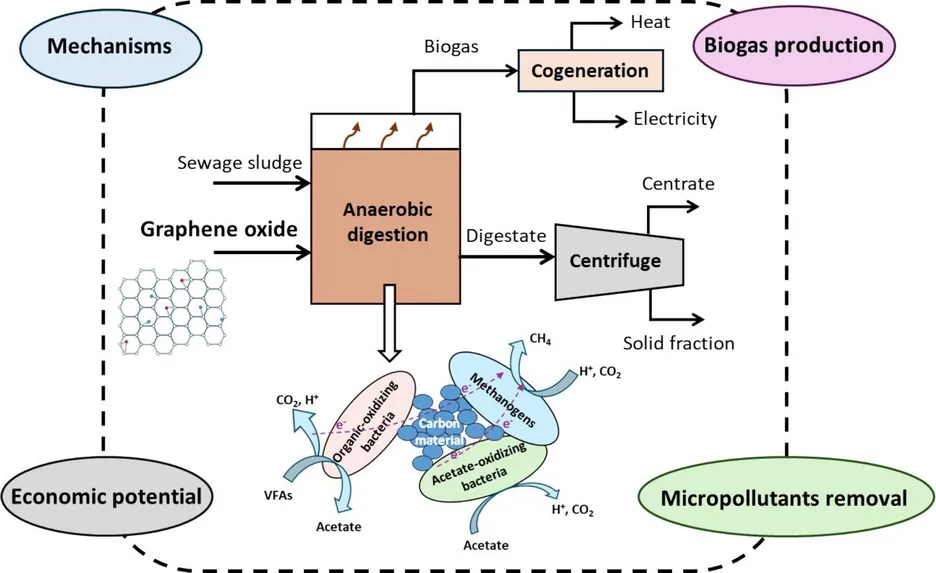The capability of graphene oxide (GO) to enhance direct interspecies electron transfer (DIET) and improve anaerobic digestion (AD) performance is gaining attention in AD literature. The present review discusses the implications of GO and its ambivalent role in AD. Under anaerobic conditions, GO is rapidly converted to biologically reduced graphene oxide (bioRGO) through microbial respiration. GO addition could promote the release of extracellular polymeric substances and lead to toxic effects on anaerobic microorganisms. However, further research is needed to determine the GO toxic concentration thresholds. GO application can impact biogas production and organic micropollutants removal of anaerobic digesters. Nevertheless, most of the studies have been conducted at batch scale and further work in continuously operated anaerobic digesters is still needed. Finally, the review evaluates the economic potential of GO application in AD systems. Overall, this review lays the foundations to improve the applicability of GO in future full-scale digesters.
